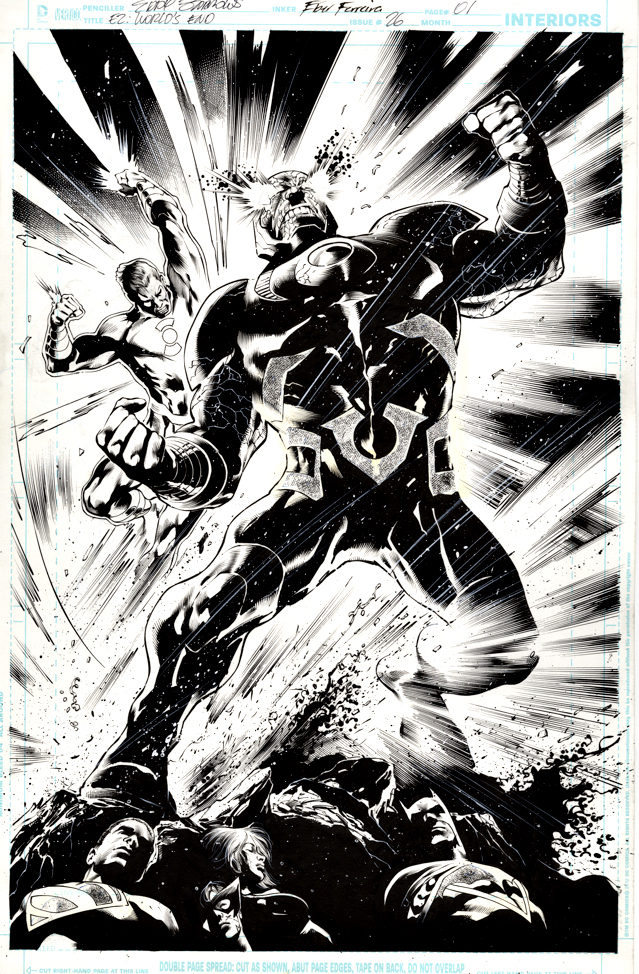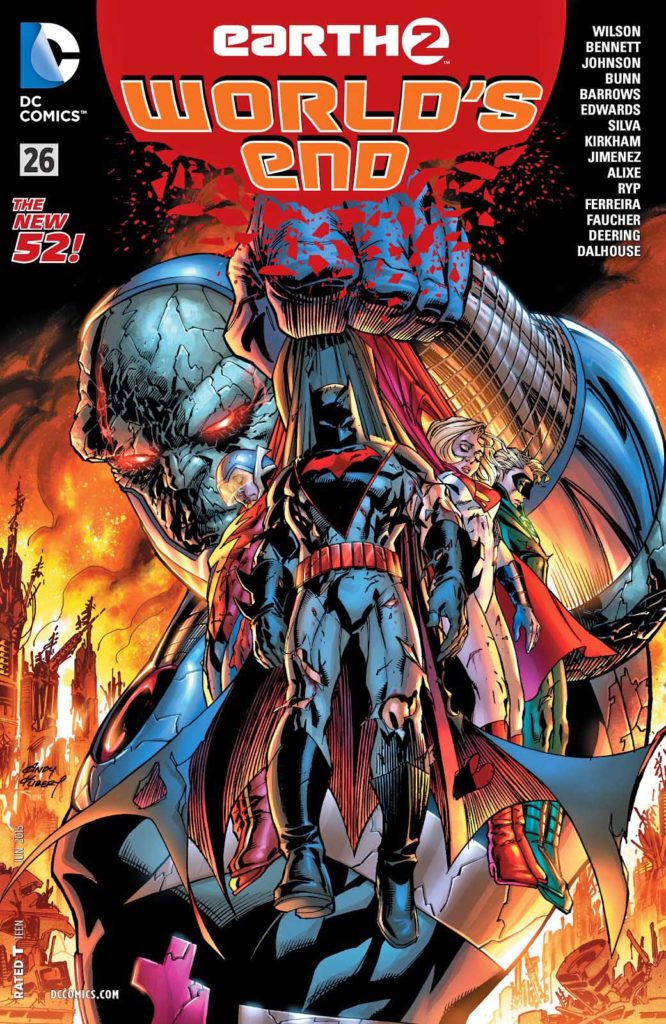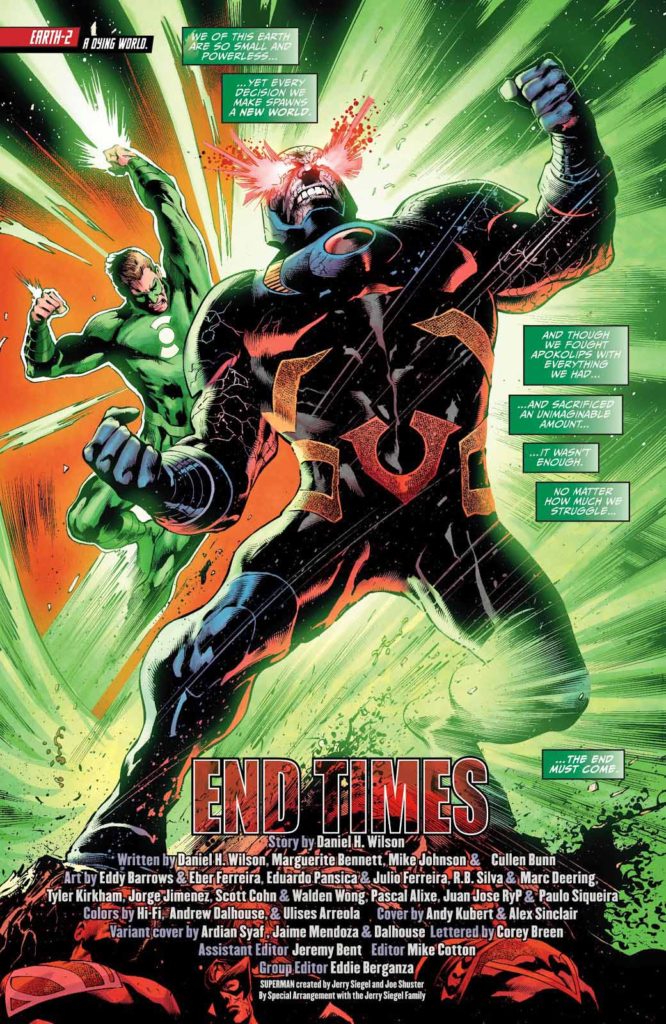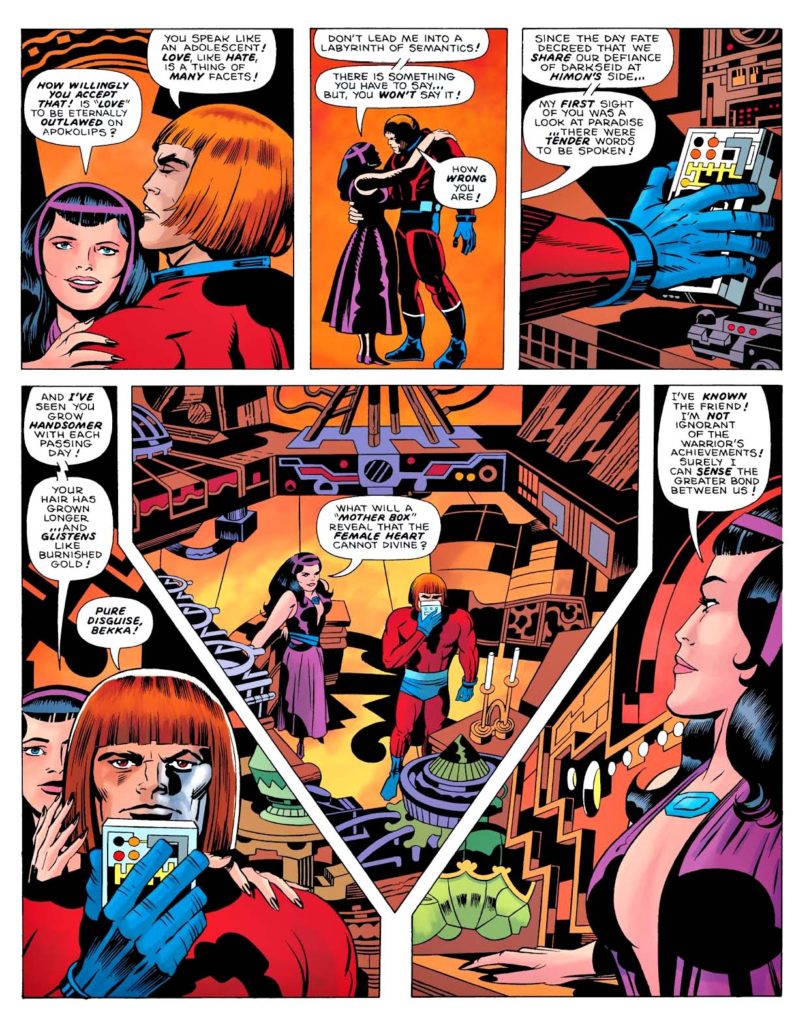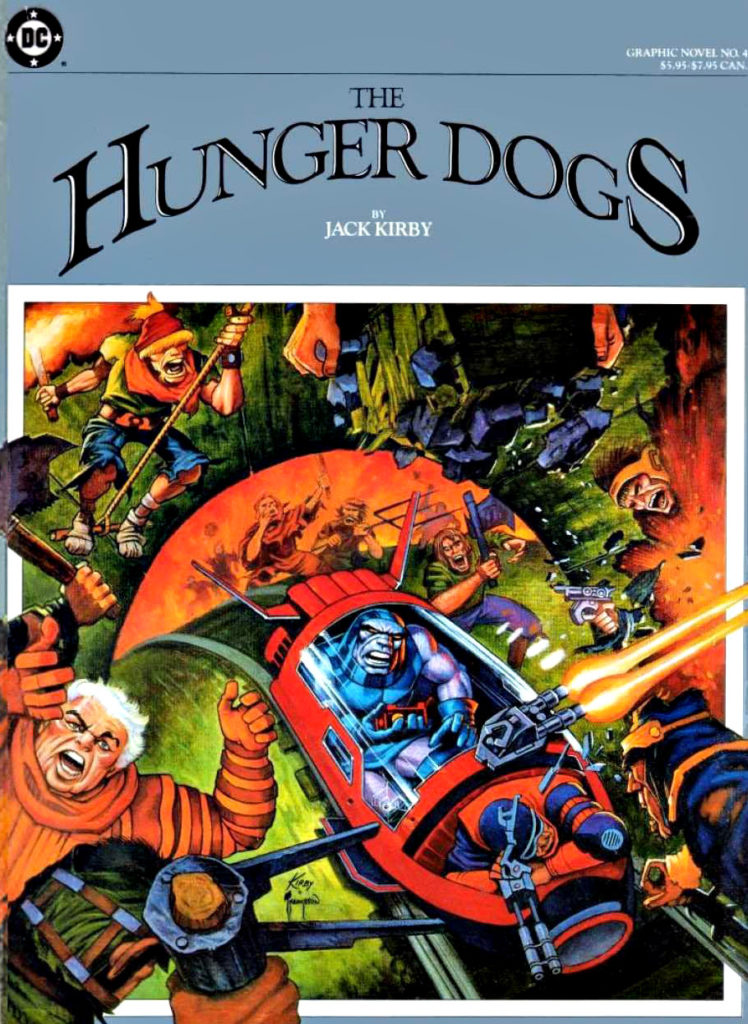Eddy Barrows — Darkseid At World’s End
Earth 2: World’s End, June 2015
Darkseid dispatches a number of earth’s greatest heroes in this great looking title page of the final issue of Earth 2:World’s End.
If you like your superhero universe grim and gritty, (as per our last post), this series, set in an alternate universe, should do nicely.
Darkseid is inarguably Jack Kirby’s greatest legacy at DC comics. Although his “fourth world” books didn’t last long at DC, Darkseid untimely became the “big bad” of the DC Universe. Shockingly, before Jack’s era, there was no over-arching multi-title super villain. This, despite the fact that by 1970, Marvel had at least a few. (Doctor Doom, Galactus, Kang, The Super Skrull, et al.)
Marvel had focused on continuity well before DC figured it out. In fact, Jack’s fourth world books, introduced the first cross-title continuity to the DC Universe.
But, as always, we digress.
Brazilian Artist and DC mainstay Eddy Barrows regularly combines quality draftsmanship and creative storytelling into a highly compelling story. Another Brazilian artist, Eber Ferreira, known for his detailed and meticulous brushwork, typically inks Eddy’s pencils.
More on Jack Kirby’s legacy at DC in the next few posts.

